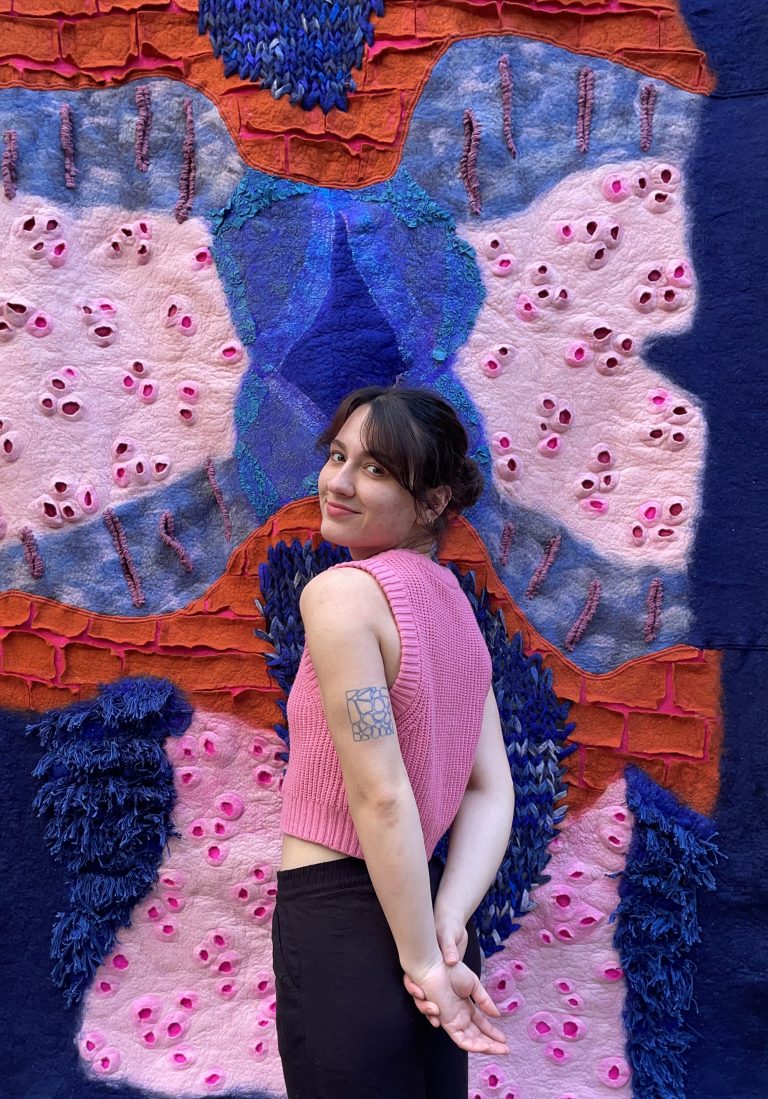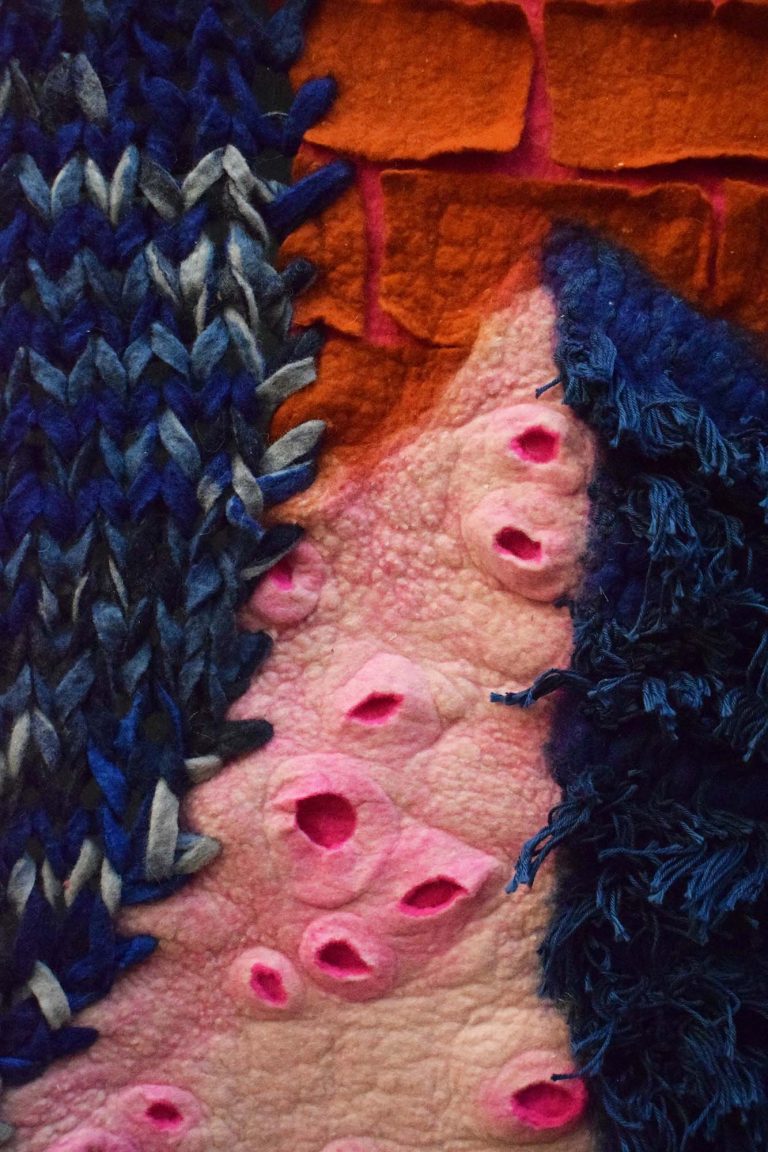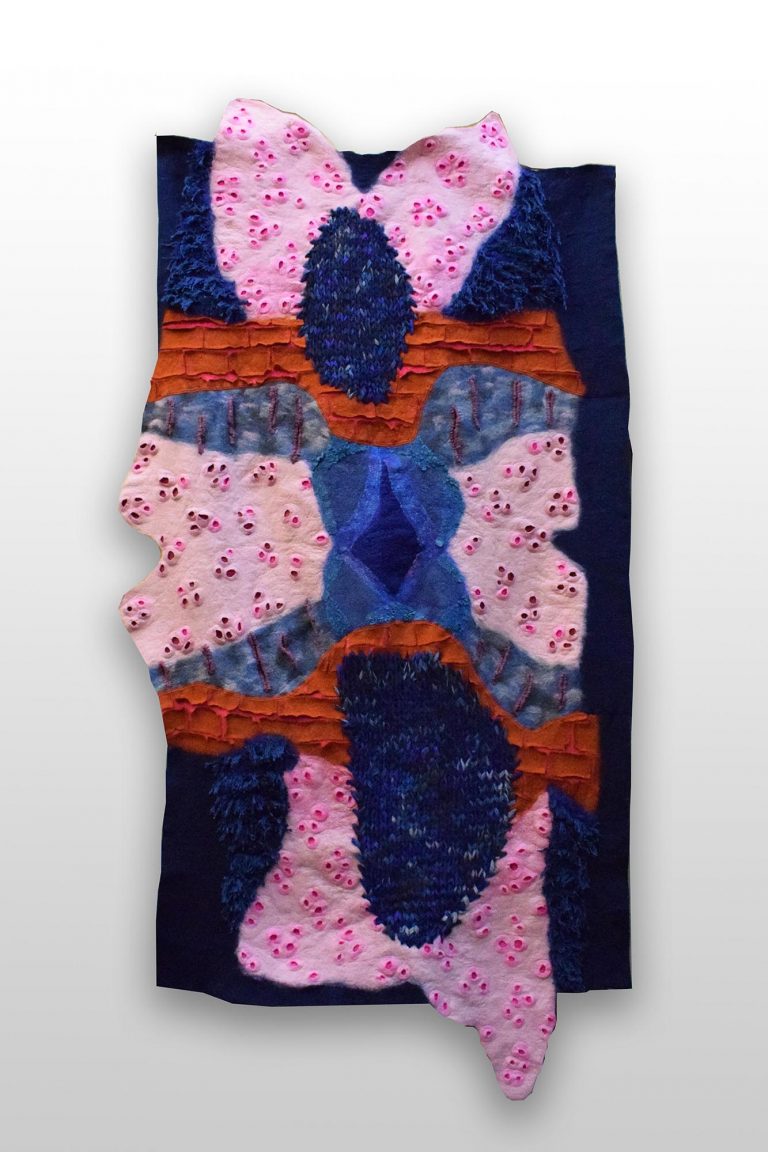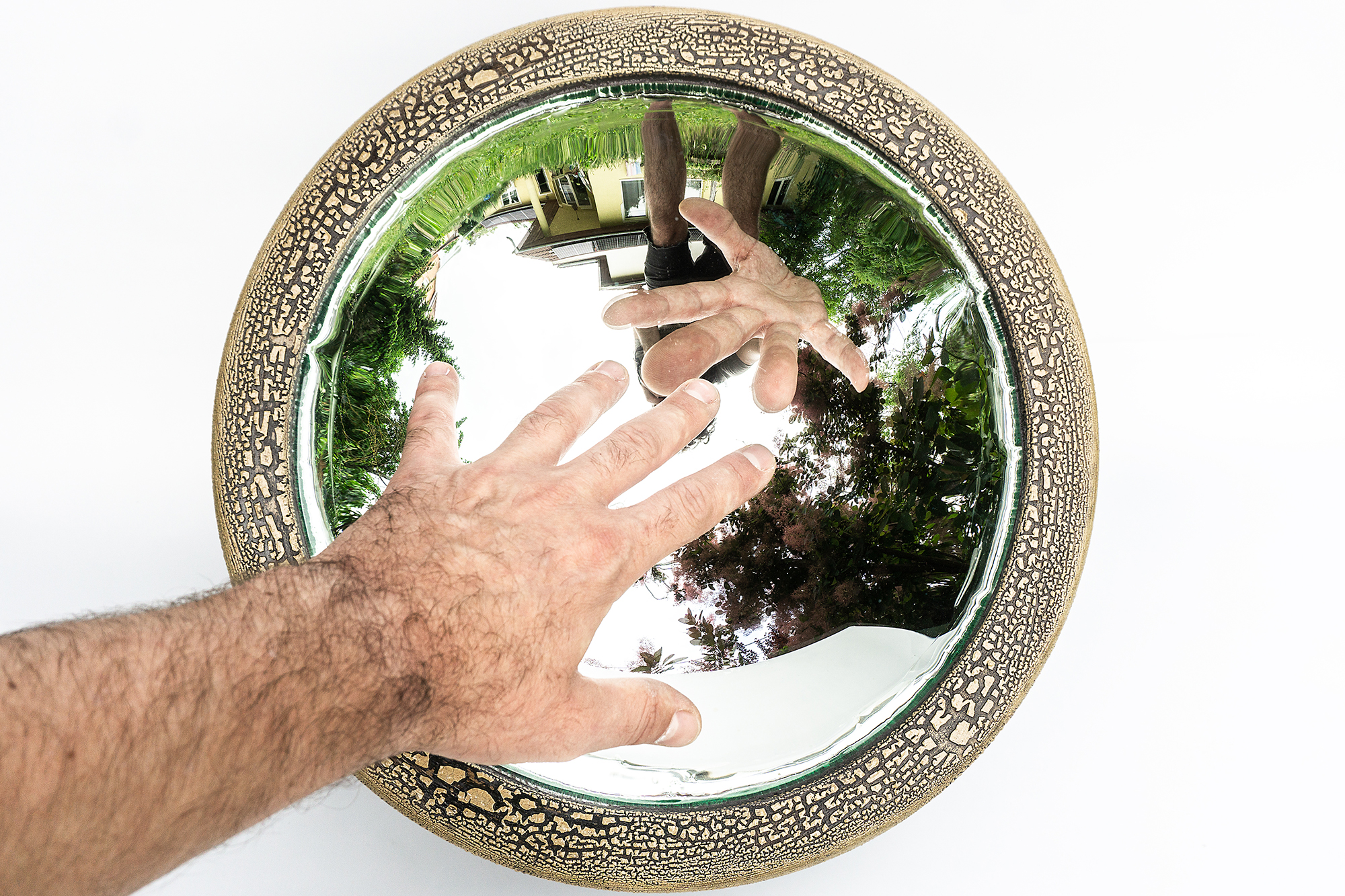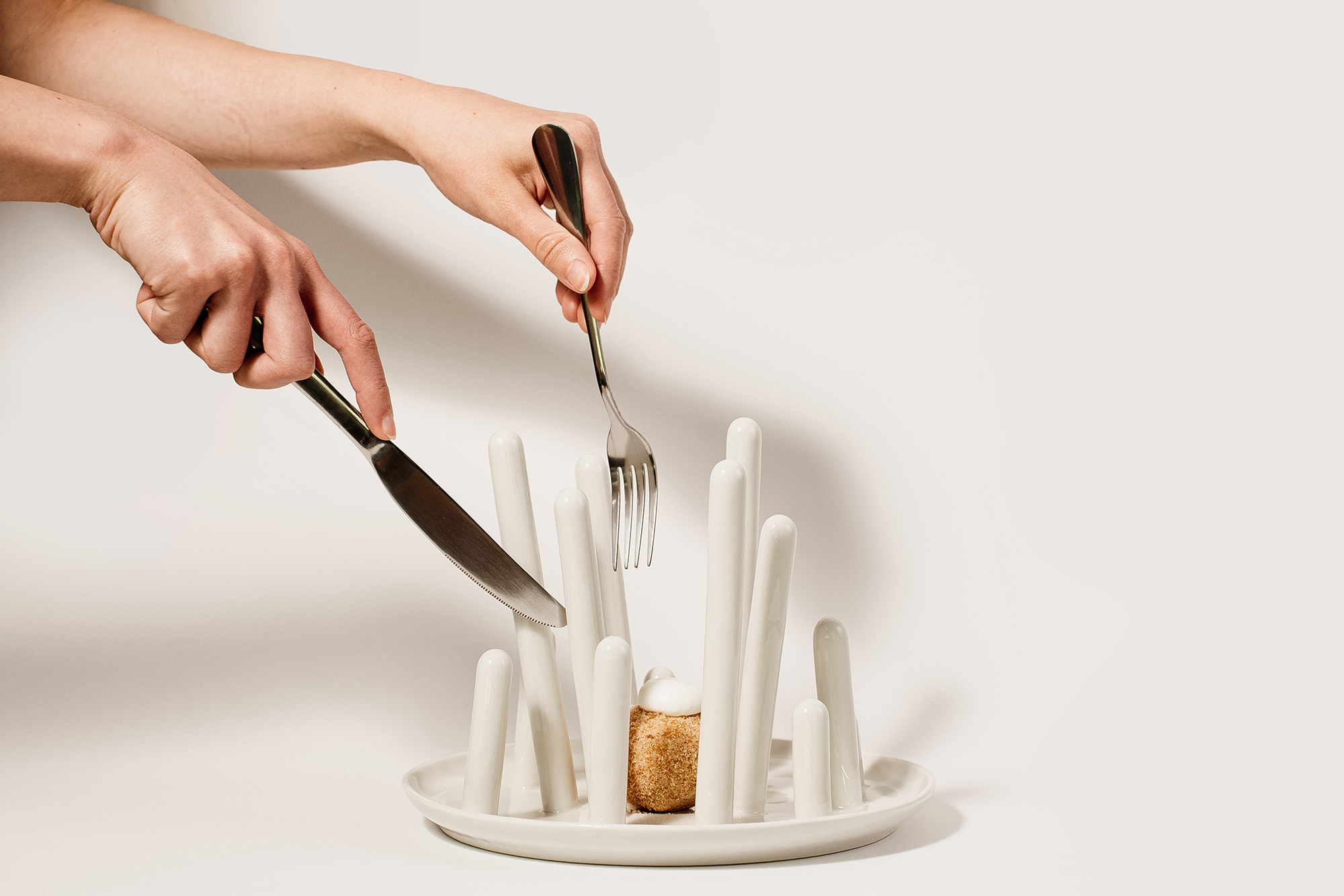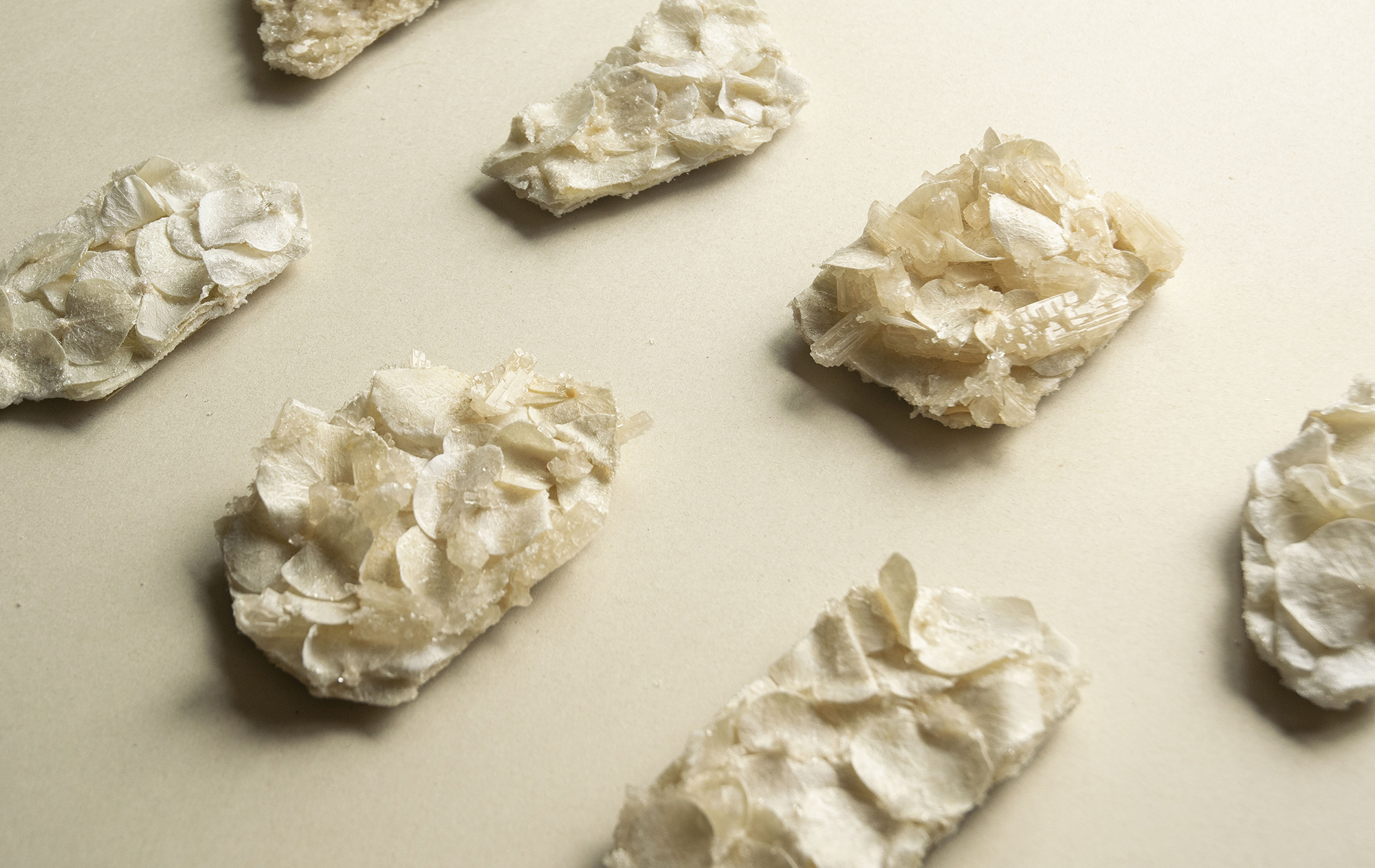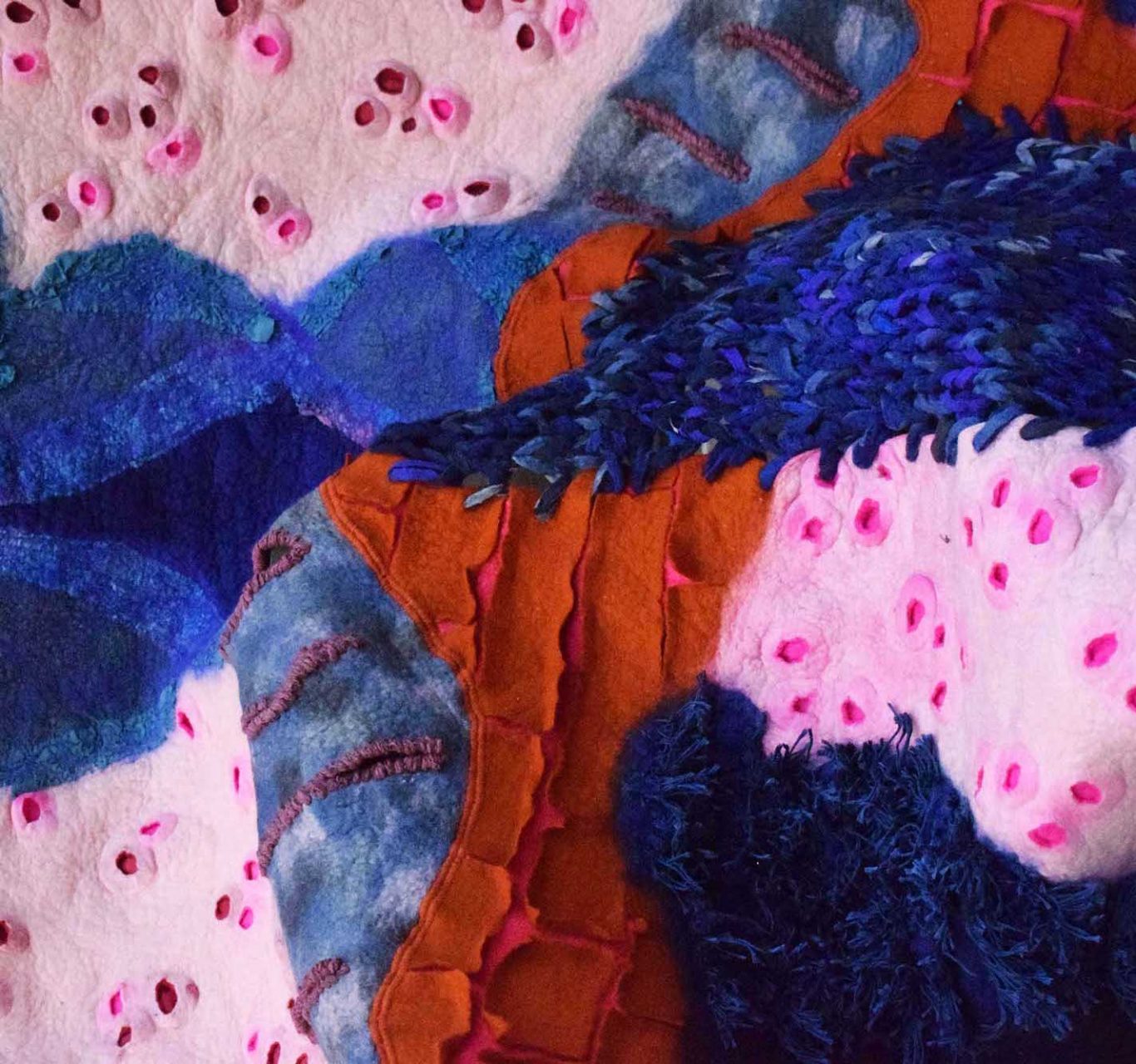

Blooming tradition – Felt art in Csenge Diviki-Nagy’s rug designs
“I first tried felting when I was six years old; I still remember the orange checkered side bag and the little figures I made”, Csenge recalls her early experiences. After a long hiatus, she rediscovered her “roots” during her university years, realising that felting holds untapped contemporary potential. This realisation led her to create a felt rug for her masterwork, a stunning example of how traditions can flourish anew in skilled hands.
The project began with research, mapping out the history of traditional felt rugs. Felt rugs were primarily characteristic of nomadic peoples and served a variety of purposes, from home decoration and insulation to dowry gifts. Alongside these functions, they also had spiritual significance, with their patterns often representing family stories. Csenge’s rug resonates with this tradition, as she drew inspiration from plants found in her family’s garden.
Cherry Blossom
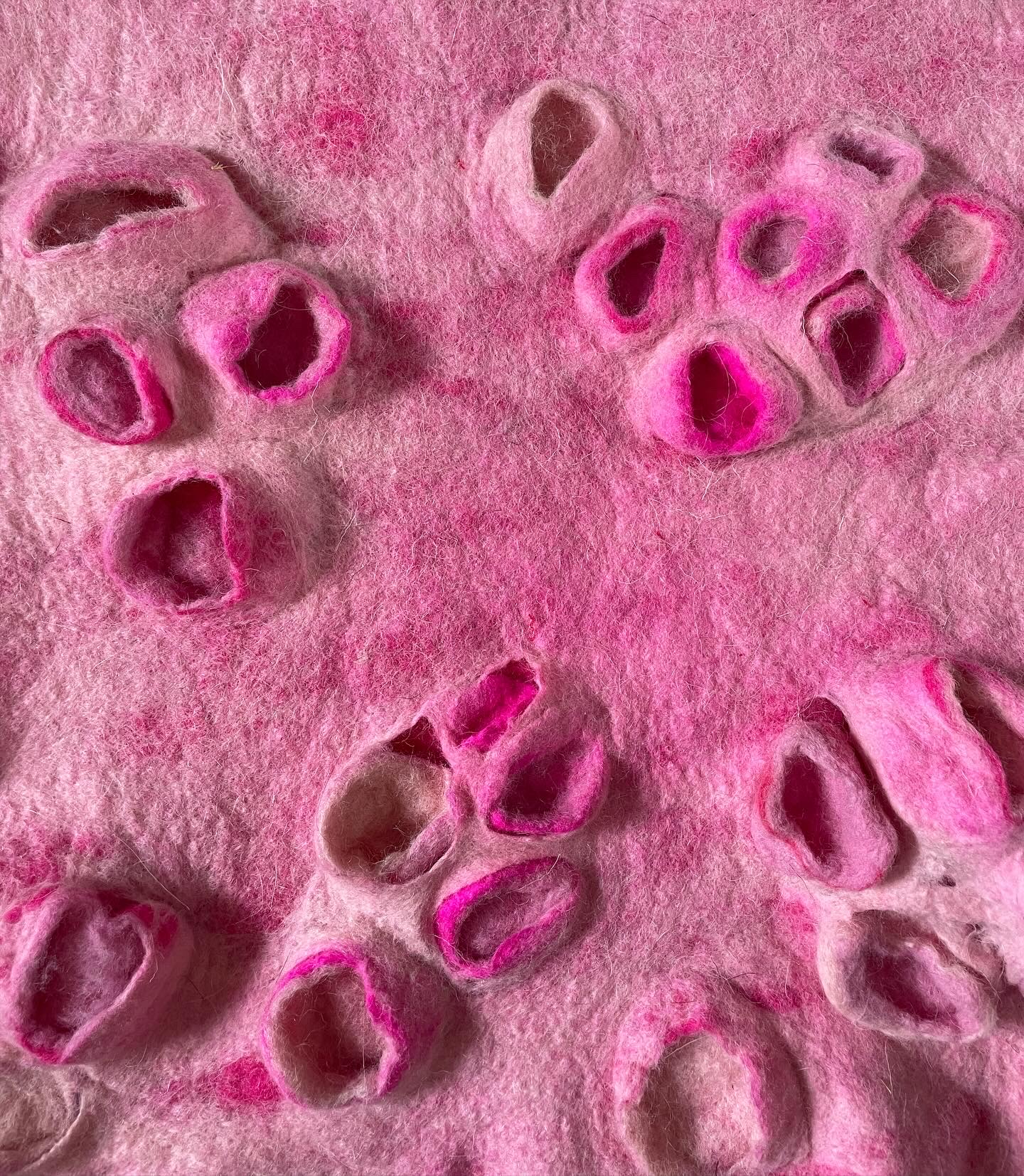
“I cut round sponges of various sizes, wrapped them in wool, and placed them on the unfelted surface, covering it with an additional layer. Once the structure was formed, I cut off the tops of the circles and removed the filling, creating hollow structures.”
False sunflower
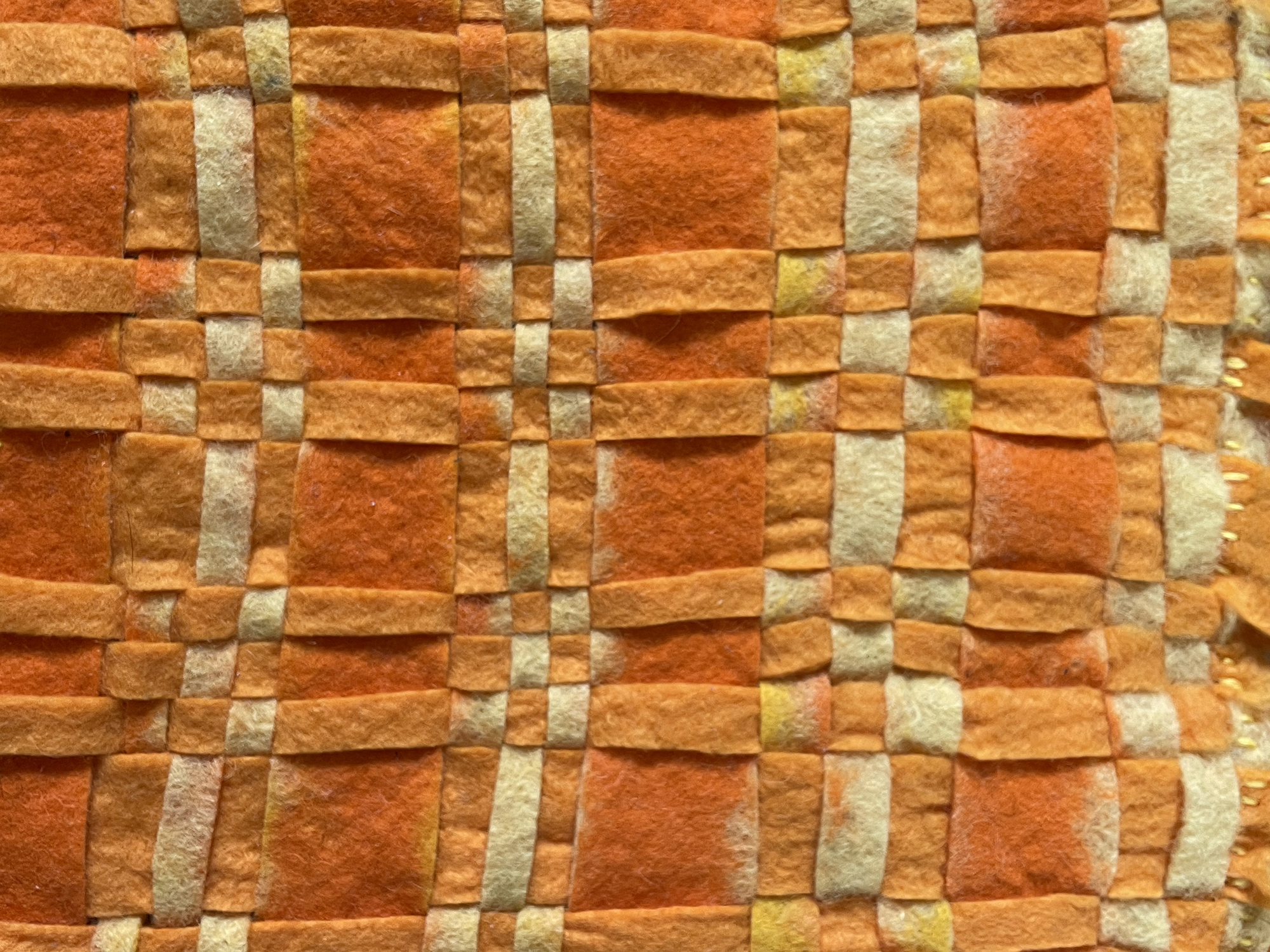
“I designed the surface using three shades of yellow in alternating patterns, evoking the shape and growth direction of the long false sunflower petals. By cutting strips into the felt, I created the warp threads, and after cutting a separate layer of felt into strips, I wove them together.”
Lilac
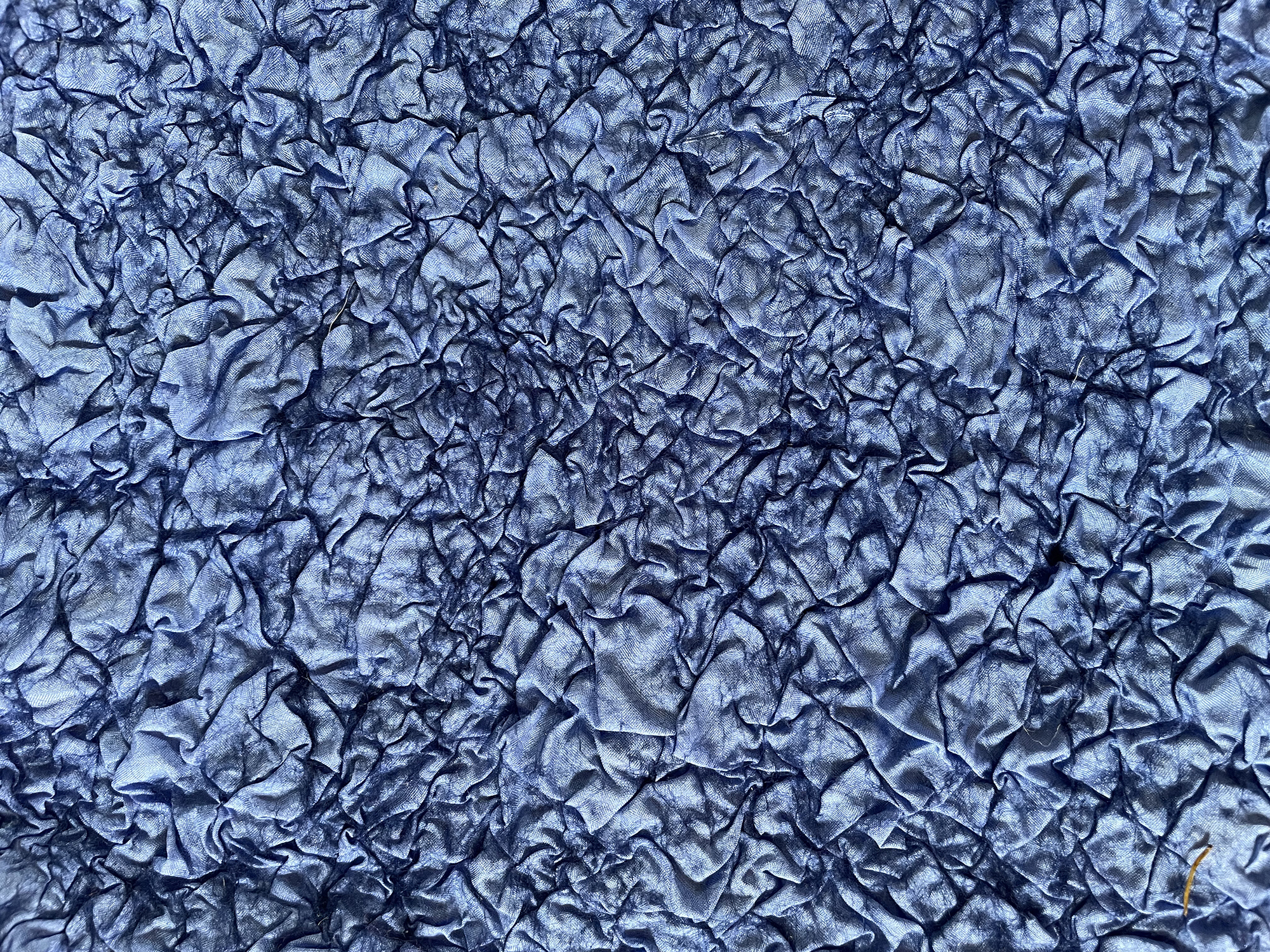
“The wool fibres cling to the silk as the felt shrinks, but the silk doesn’t, resulting in a beautifully crinkled surface that mimics the small clusters of lilac flowers.”
Ivy

“I cut a mottled felt sheet into strips in a spiral pattern to form the ‘thread’. I then attached it to parts of the rug during the knitting process, using thick needles to create a loose, large-looped rustic surface.”
Cedar
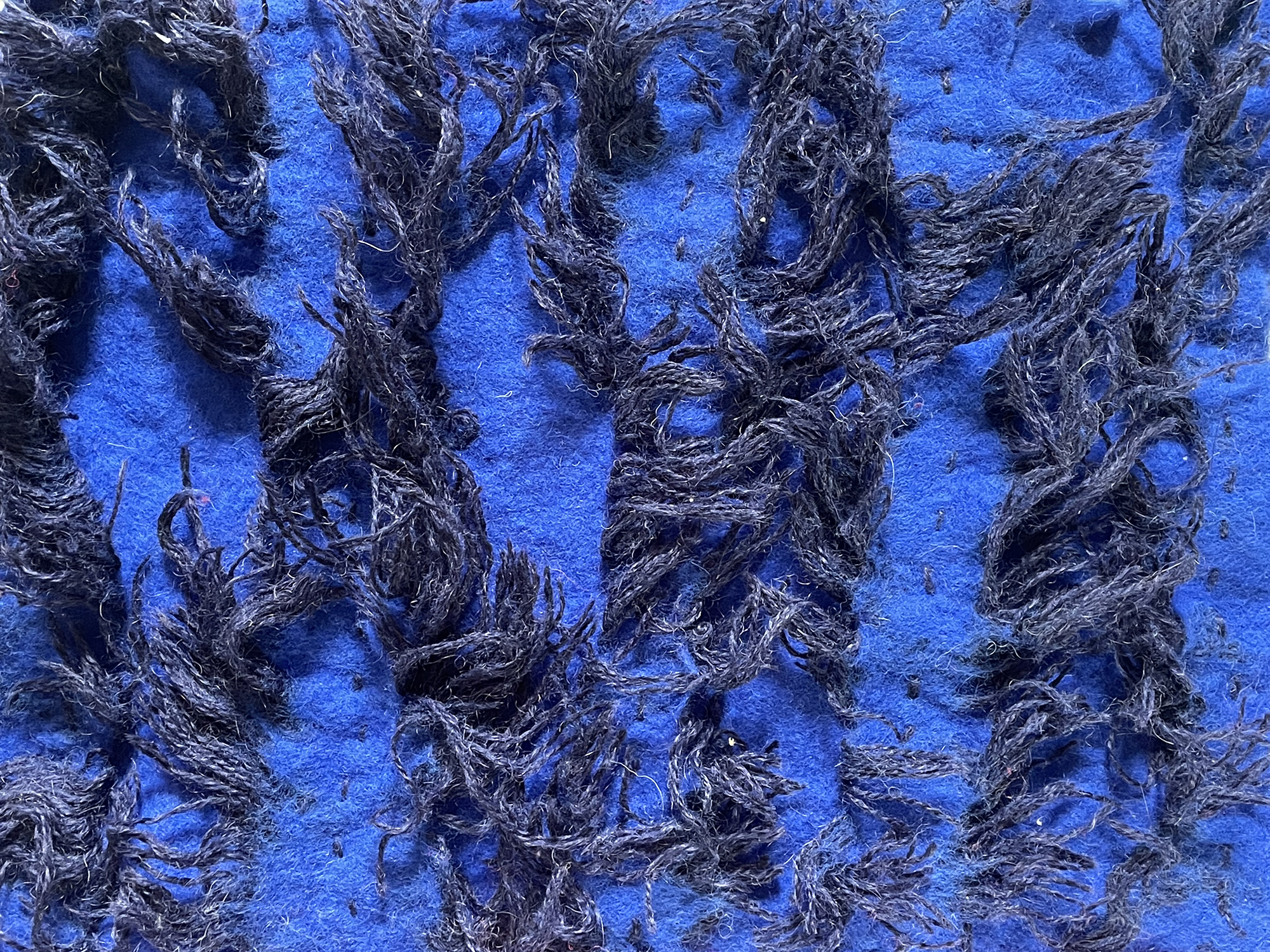
“I secured deep blue yarns to the wool surface through felting. The yarn, which I cut into segments and placed on the base, couldn’t be wool, as it would have fused into the surface, losing its fuzzy effect.”
Birch
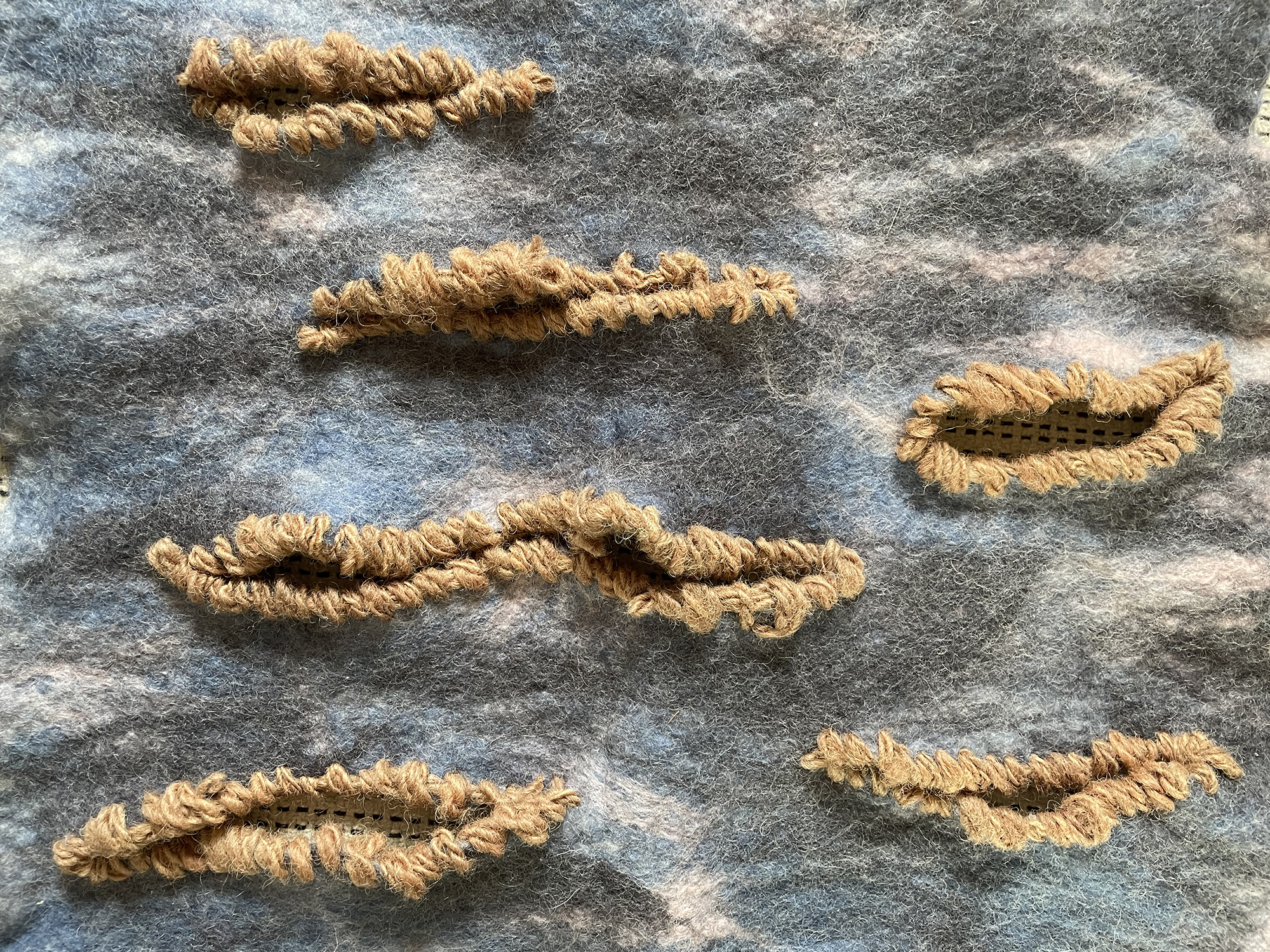
“The stark contrast between soft and coarse textures was achieved by combining a fine wool layer with rustic wool thread, which I used to embroider around the cuts in the felt.”
Brick
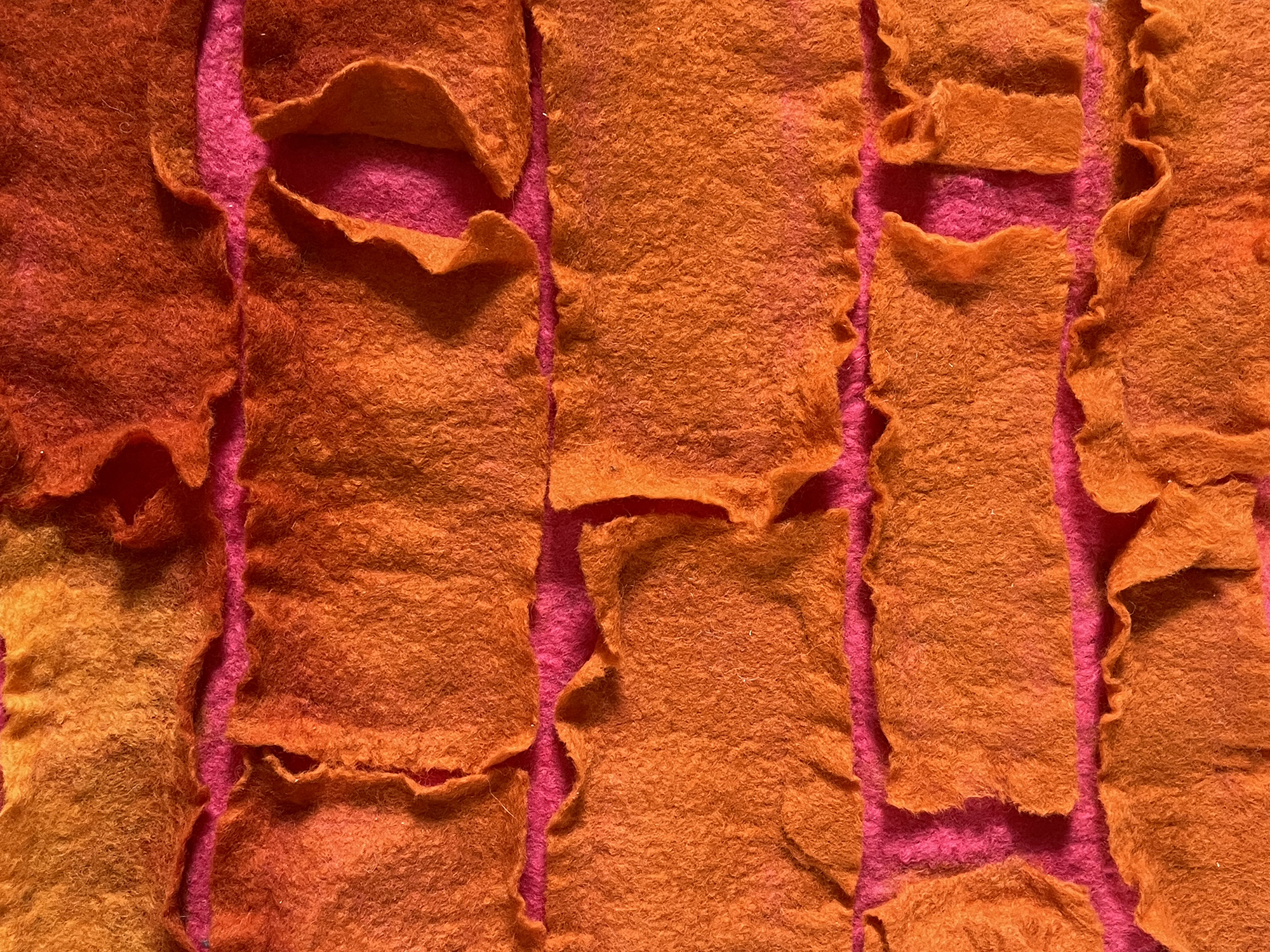
“I formed the mortar pattern in pink on the base, then covered it with a nylon layer. A brick-coloured felt layer was placed on top of the nylon, which became felted while floating. Finally, I cut into the felt sheet covering the nylon, revealing the pink layer underneath.”
// /
The project was developed at the Fashion and Textile Design MA programme of the Moholy-Nagy University of Art and Design with Hedvig Harmati as supervisor.

